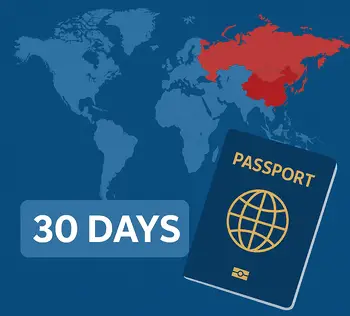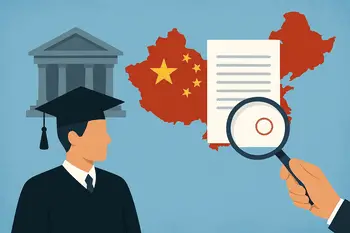
China’s education system is vast, intricate, and renowned for its high standards and competitive nature. This blog post provides a comprehensive overview of its structure, key characteristics, challenges, and ongoing reforms, offering insights into one of the world’s most influential education systems.
The Structure of the Chinese Education System
The Chinese education system is divided into several stages, each with its own unique features and objectives:
1. Preschool Education (幼儿教育): Ages 3-6
Preschool education in China is not mandatory but widely attended.
It focuses on the holistic development of children, preparing them for formal schooling.
The curriculum includes basic literacy and numeracy skills, social interaction, and physical activities.
2. Primary Education (小学教育): Ages 6-12
Primary education is compulsory and lasts for six years, typically starting at age six.
The curriculum is standardized nationwide and includes subjects such as Chinese, mathematics, science, moral education, physical education, and art.
English is introduced in the later years of primary school.
Key Features:
- Compulsory Attendance: Ensures universal basic education.
- Standardized Curriculum: Promotes consistency in education quality across the country.
- Focus on Fundamentals: Emphasizes literacy, numeracy, and moral values.
3. Secondary Education (中学教育): Ages 12-18
Secondary education is divided into two stages:
- Junior Secondary (初中): Ages 12-15, compulsory for three years. The curriculum builds on primary education and includes subjects like Chinese, mathematics, English, physics, chemistry, and history. At the end of junior secondary, students take the Zhongkao (中考) exam, which determines their placement in senior secondary schools.
- Senior Secondary (高中): Ages 15-18, non-compulsory. Students choose between an academic or vocational track. Academic track students focus on subjects like mathematics, Chinese, English, and sciences, while vocational track students receive training in trades. The Gaokao (高考), a highly competitive college entrance exam, is taken at the end of senior secondary education.
4. Higher Education (高等教育): Ages 18 and Above
Higher education in China includes universities, colleges, and vocational schools.
Admission is primarily based on Gaokao scores, though some institutions consider other factors like interviews or extracurricular achievements.
Key Features:
- Types of Institutions: Includes research universities (e.g., Tsinghua University, Peking University), liberal arts colleges, and technical institutes.
- Degree Programs: Offers bachelor’s, master’s, and doctoral programs in various fields.
- Vocational Education: Provides practical training for students entering the workforce.
Key Characteristics of the Chinese Education System
1. Emphasis on Examinations
Examinations are central to the Chinese education system.
Major exams like the Zhongkao and Gaokao significantly influence students’ academic and career prospects.
The Gaokao, in particular, is often described as a life-defining moment for students.
2. High Academic Standards
The curriculum is rigorous, and students are expected to achieve high standards.
This creates a highly competitive environment, especially at the senior secondary and higher education levels.
3. Focus on STEM
China prioritizes science, technology, engineering, and mathematics (STEM) subjects to support its goals of technological advancement and innovation.
4. Moral Education
Moral education is integrated into the curriculum at all levels, emphasizing values such as respect, diligence, and social responsibility, reflecting Confucian cultural influences.
5. Extracurricular Activities
While academics are paramount, schools encourage participation in extracurricular activities, including sports, arts, and clubs, to promote holistic development.
Challenges in the Chinese Education System
Despite its strengths, the Chinese education system faces several challenges:
1. Pressure and Stress
The high-stakes nature of exams like the Gaokao places immense pressure on students, often leading to stress and mental health issues.
Source: World Health Organization (WHO).
2. Urban-Rural Disparities
There are significant disparities in education quality and resources between urban and rural areas.
For example, rural schools often lack qualified teachers and modern facilities.
According to a 2022 report by UNICEF, rural students are less likely to attend higher education institutions.
3. Innovation and Creativity
Critics argue that the system’s focus on rote learning and examination performance stifles creativity and critical thinking, skills that are increasingly important in the modern workforce.
Ongoing Reforms
The Chinese government has implemented various reforms to address these challenges:
1. Reducing Exam Pressure
Policies like the “Double Reduction” policy aim to reduce homework and after-school tutoring pressures, promoting a more balanced approach to education.
Source: Ministry of Education of the People’s Republic of China.
2. Improving Rural Education
Initiatives such as increased funding for rural schools and teacher training programs aim to bridge the urban-rural gap.
For example, the “National Training Program for Rural Teachers” has improved teacher quality in underdeveloped areas.
3. Encouraging Innovation
Reforms are being introduced to foster creativity and critical thinking in the curriculum, such as project-based learning and interdisciplinary courses.
The Role of Private and International Schools
Private Schools
Private schools are becoming increasingly popular among middle-class families.
They often offer smaller class sizes, advanced facilities, and a mix of Chinese and international curricula.
International Schools
International schools cater to expat families and affluent Chinese families seeking alternative education options.
These schools typically follow curricula such as the International Baccalaureate (IB), British (A-Levels), or American (AP) systems.
Source: International School Database.
The Role of Technology in Education
Technology is transforming education in China. Online learning platforms like VIPKid and Tencent Classroom have gained popularity, especially during the COVID-19 pandemic.
AI-driven tools are also being used to personalize learning and improve efficiency.
Practical Advice for Parents and Students
- Preparing for Exams: Start early and focus on time management. Consider enrolling in tutoring programs for subjects like mathematics and English.
- Choosing Educational Tracks: Evaluate your child’s strengths and interests when deciding between academic and vocational tracks.
- Exploring Alternatives: For expat families, research international schools and their curricula to find the best fit.
Conclusion
The Chinese education system is a testament to the country’s commitment to developing its human capital.
While it excels in academic rigor and standardized curricula, it faces challenges such as exam pressure, urban-rural disparities, and the need for innovation.
Ongoing reforms aim to address these issues, ensuring that the system evolves to meet modern needs.
By understanding the structure, characteristics, and challenges of the Chinese education system, parents, students, and educators can better navigate its complexities and make informed decisions.
For further reading, visit:



